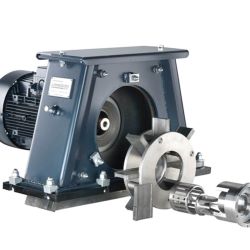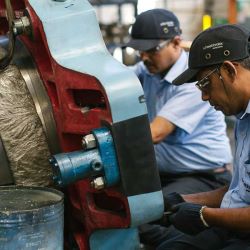New specification for rail wheels raises peening questions
A change in the specification of rail wheels by the American Association for Railroads (AAR) probably wouldn’t immediately strike you as a momentous event. But even if you’re not affected by it, it is worth reading this, as the issue at hand is one across industries and applications. And it’s about interpreting, applying, and complying with peening specifications – and asking the right questions about them.
Here’s what happened: In its new specification for rail wheels, the AAR has tightened up rules around the manufacturing of carbon steel train wheels in an effort to improve wheel durability. As part of this, the AAR has also made some seemingly minor adjustments to the prescribed peening spec – with potentially significant knock-on effects for manufacturers. And with the US a lead market for the rail sector with global supply chains, we expect the new spec to travel way beyond North America.
The changes in a nutshell
Measured using a certified Almen C strip, peening intensity must now be sufficient to produce a minimum arc height of not less than 0.01 inches (Almen 10C). This is an increase from Almen 8C, meaning abrasive must hit wheel surfaces harder.
A more disruptive change is that coverage now also needs to be measured using an Almen strip. Coverage is currently checked visually and the peening process stopped once the wheel is fully treated. This approach means softer materials can be processed more quickly than harder materials.
The new regulations stipulate that the processing time for each wheel must now be “no less than the time required to reach saturation as determined by the documented saturation curve“ – which means the peening time is set by the Almen strip, not the material. And here’s the rub: the time needed to achieve the required saturation level on an Almen strip is significantly longer than for the carbon steel that the wheels are actually made of.
As a result, the peening process for the wheels is now fixed at the 150 or so seconds per wheel that match the peening time for the Almen strip – a cycle time well above the current industry expectation of 90 seconds per wheel.
What to do about it
To meet the new intensity requirements, the velocity of the shot hitting the rail wheels will need to increase. And to meet the coverage requirements in a timescale that is closer to the industry standard, the volume of abrasive thrown at components must go up.
To achieve both objectives, the horsepower of blast machines needs to increase. By running a blast machine at 60HP rather than 40HP, abrasive flow can be doubled over a fixed time period.
So depending on their given situation, rail wheel manufacturers can do one of three things:
1. make no changes and accept the longer processing time. This may be the best approach if manufacturers aren’t prepared for the implications of increasing horsepower, such as greater power consumption (and provision) requirements and increased wear and tear on parts.
2. buy new machines that can meet the new operational requirements
3. if existing equipment is in good working order, it can be upgraded as part of an Equipment Modernization Program (EMP) to meet the new requirements.
Learnings
What we can learn from this is that peening specifications are often misunderstood or unclear. Reading them critically ensures compliance and allows you to anticipate the impact of new specifications on your operations.
And finally, there’s almost always a solution and I’m here to find it with you. So if you’ve got a burning question about peening specifications, get in touch – or post it in the comments below!


